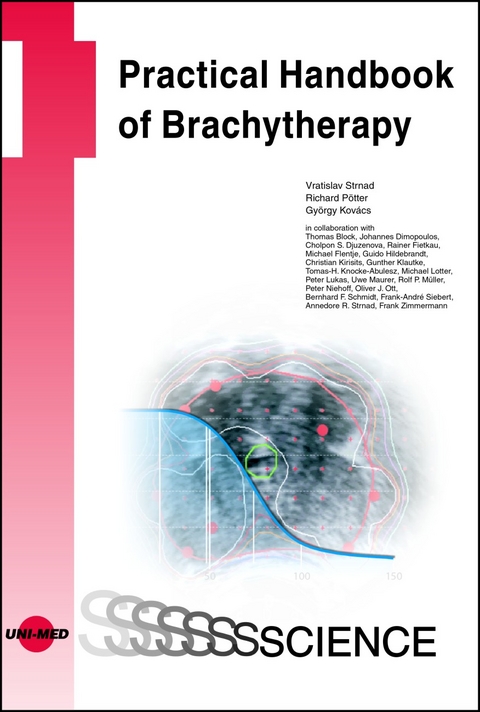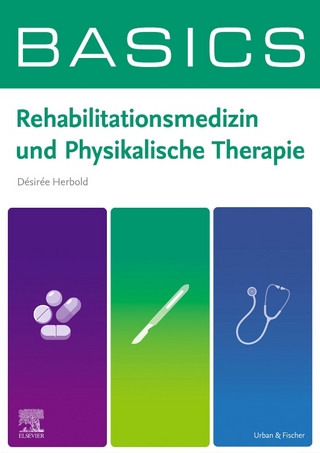1.Introduction23
2.History of brachytherapy25
3.Radiobiology31
3.1.References34
4.Physical aspects – sources, dosimetry, dose specification35
4.1.Sources35
4.1.1.Radionuclides in brachytherapy35
4.1.1.1.Gamma and characteristic X-ray radiation35
4.1.1.2.Beta-emitters36
4.1.2.Characterisation of source strength36
4.2.Dosimetry36
4.2.1.Control of reference air kerma rate36
4.2.1.1.Measurement with well-type ionisation chambers36
4.2.1.2.Measurement in compact chambers in solid body phantoms36
4.2.2.Checking the source position37
4.2.3.Calculation of dose distributions37
4.2.3.1.Dose distributions of single sources37
4.2.3.2.Reconstruction of source distribution38
4.2.3.2.1.Individual reconstruction processes39
4.2.3.3.Optimisation and visualisation of dose distributions40
4.3.Dose specification42
4.3.1.Dose specification in intraluminal and intracavitary therapy44
4.3.1.1.Linear source (e.g. vaginal cylinder, oesophageal/bronchial applicators, vessels)44
4.3.1.2.Non-surgically treated cervical carcinoma45
4.3.1.3.Endometrial carcinoma not treated surgically46
4.3.2.Dose specification in interstitial brachytherapy47
4.3.2.1.Dose-volume histograms (DVH), relevant dose values and volumes, quality parameters (indices)47
4.3.2.1.1.Relevant dose values and volumes48
4.3.2.1.2.Quality parameters – QI indices49
4.3.2.1.3.Examples for documentation50
4.4.References50
5.Quality assurance52
5.1.Quality assurance for afterloading machines and procedures in case of emergency
for a remote afterloader52
5.2.Quality assurance in radiotherapy treatment planning systems54
5.3.Special methods55
5.4.References57
6.Clinical treatment planning and imaging58
6.1.Clinical treatment planning58
6.1.1.Indication58
6.1.1.1.Definitive treatment58
6.1.1.2.Adjuvant therapy58
6.1.2.Gross Target Volume (GTV) and Clinical Target Volume (CTV)58
6.1.3.Selection of technique, preliminary and definitive treatment plan59
6.1.3.1.Interstitial brachytherapy59
6.1.3.2.Intracavitary brachytherapy61
6.1.3.3.Intraluminal brachytherapy62
6.1.4.Dose, dose fractionation, dose rate62
6.1.5.Infrastructure and personnel planning63
6.1.6.References63
6.2.Modern imaging techniques in brachytherapy64
6.2.1.Procedure for image-based localisation in brachytherapy64
6.2.2.Basics of image-guided brachytherapy66
6.2.3.Image-guided "preliminary treatment planning"68
6.2.3.1.Interstitial brachytherapy69
6.2.3.2.Intraluminal brachytherapy,70
6.2.3.3.Intracavitary brachytherapy70
6.2.3.4.Contact brachytherapy71
6.2.4.Image-guided application71
6.2.5.Image-guided "definitive treatment planning"72
6.2.6.References74
7.Instruments and equipment75
7.1.Instruments for interstitial brachytherapy75
7.1.1.Temporary implants75
7.1.1.1.Needles, catheters (tubes)75
7.1.1.2.Templates77
7.1.1.3.Auxiliary instruments79
7.1.2.Permanent implants80
7.2.Instruments for intracavitary brachytherapy82
7.2.1.Uterovaginal applicators82
7.2.2.Vaginal applicators84
7.2.3.Endometrial applicators84
7.2.4.Intraluminal applicators for tumours in the oesophagus, bronchus, trachea, common bile duct
and nasopharynx and for intravascular brachytherapy84
7.2.5.Moulds for cancers of the paranasal sinuses or orbit85
7.3.Surface applicators85
7.3.1.Skin applicators85
7.3.2.Eye applicators86
7.4.Afterloading devices86
7.4.1.The irradiation device86
7.4.2.The control unit87
7.4.3.Important requirements for radiation protection88
7.5.References88
8.Intraoperative brachytherapy89
8.1.Indications and patient selection criteria89
8.1.1.Purpose and chances of the treatment89
8.2.Target volumes, dose specification and dose90
8.3.Technique, execution and practical tips92
8.4.Results93
8.5.Side effects95
8.6.Summary95
8.7.References96
9.Interstitial hyperthermia97
9.1.Techniques of interstitial hyperthermia97
9.2.Planning, execution and documentation of interstitial hyperthermia97
9.3.Results of interstitial hyperthermia and brachytherapy98
9.3.1.Glioblastomas98
9.3.2.Local recurrences and regional recurrences of tumours of the head/neck98
9.3.3.Breast cancer99
9.3.4.Carcinoma of the prostate100
9.3.5.Tumours in the small pelvis100
9.4.New approaches for interstitial hyperthermia100
9.5.Summary101
9.6.References101
10.Pre- and postoperative supportive care in brachytherapy102
10.1.Patient preparation102
10.2.Anaesthesia and patient positioning102
10.3.Pain management103
10.3.1.General principles103
10.3.2.Postoperative management103
10.4.Anti-infective therapy104
10.4.1.Pre- and postoperative antibiotic treatment104
10.5.Prophylaxis of thrombosis104
10.6.Pre- and postoperative supportive care by specific tumour sites105
10.6.1.Tumours of the head/neck105
10.6.2.Breast cancer106
10.6.3.Carcinoma of the prostate107
10.6.4.Gynaecological tumours108
10.7.Follow-up109
10.8.References109
11.Cervical cancer110
11.1.Indications110
11.2.Treatment planning110
11.2.1.Target volume110
11.2.2.Dose calculation and treatment planning (dose specification)111
11.2.3.Dose, dose rate, fractionation120
11.3.Practical execution and technique120
11.4.Results121
11.4.1.Locally limited tumours122
11.4.2.Locally advanced tumours122
11.4.3.Concomitant chemoradiotherapy122
11.5.Side effects122
11.6.Summary123
11.7.References123
12.Endometrial carcinoma125
12.1.Indications, patient selection criteria125
12.1.1.Intracavitary brachytherapy in primary endometrial carcinoma125
12.1.2.Adjuvant intravaginal brachytherapy125
12.1.3.Intracavitary and interstitial brachytherapy for recurrences126
12.2.Treatment planning126
12.2.1.Target volumes126
12.2.1.1.Primary radiotherapy126
12.2.1.2.Adjuvant brachytherapy127
12.2.1.3.Interstitial brachytherapy127
12.2.2.Dose specification128
12.2.2.1.Primary radiotherapy128
12.2.2.2.Adjuvant brachytherapy128
12.2.2.3.Interstitial brachytherapy128
12.2.3.Dose, dose rate, fractionation128
12.3.Practical execution and technique129
12.3.1.Primary radiotherapy129
12.3.2.Adjuvant brachytherapy129
12.3.3.Interstitial brachytherapy129
12.4.Results129
12.5.Side effects130
12.6.Summary130
12.7.References130
13.Vaginal carcinoma132
13.1.Indications132
13.2.Treatment planning132
13.2.1.Target volume132
13.2.2.Dose calculation and treatment plan (dose specification)133
13.2.3.Dose, dose rate and fractionation136
13.3.Practical execution and technique137
13.3.1.Vaginal brachytherapy137
13.3.2.Vaginal and interstitial brachytherapy137
13.4.Results138
13.5.Side effects138
13.6.Summary138
13.7.References139
14.Vulvar carcinoma140
14.1.Indications, patient selection criteria140
14.2.Treatment planning140
14.2.1.Target volumes140
14.2.2.Dose specification140
14.2.3.Dose, dose rate, fractionation141
14.3.Practical execution and technique141
14.4.Results143
14.5.Side effects144
14.6.Summary144
14.7.References144
15.Carcinoma of the female urethra146
15.1.Indications, patient selection criteria146
15.2.Treatment planning146
15.2.1.Target volumes146
15.2.2.Dose specification146
15.2.3.Dose, dose rate, fractionation147
15.3.Practical execution and technique147
15.4.Results147
15.5.Side effects148
15.6.Summary148
15.7.References148
16.Carcinoma of the prostate150
16.1.Indications, patient selection criteria150
16.1.1.Permanent implantation150
16.1.2.Temporary implantation150
16.1.3.Contraindications to implantation151
16.2.Treatment planning151
16.2.1.Target volumes151
16.2.2.Dose specification, fractionation152
16.2.2.1.Permanent (LDR) brachytherapy152
16.2.2.2.Temporary (HDR) brachytherapy152
16.3.Practical execution and technique153
16.3.1.Permanent brachytherapy (seeds)153
16.3.2.Temporary brachytherapy (HDR afterloading)156
16.4.Results158
16.4.1.Permanent brachytherapy (seeds)158
16.4.2.Temporary brachytherapy (HDR)158
16.5.Side effects159
16.5.1.Permanent brachytherapy (seeds)159
16.5.2.Temporary brachytherapy (HDR)159
16.6.Summary160
16.7.References160
17.Carcinoma of the penis162
17.1.Indications, patient selection criteria162
17.2.Treatment planning162
17.3.Practical execution and technique162
17.3.1.Contact brachytherapy162
17.3.2.Interstitial brachytherapy163
17.4.Results164
17.5.Side effects164
17.5.1.Acute side effects164
17.5.2.Late side effects164
17.6.Summary165
17.7.References165
18.ENT tumours166
18.1.Carcinoma of the lip166
18.1.1.Indications, patient selection criteria166
18.1.2.Treatment planning166
18.1.2.1.Target volumes166
18.1.2.2.Dose specification166
18.1.2.3.Dose, dose rate, fractionation167
18.1.3.Practical execution, technique167
18.1.4.Results167
18.1.5.Side effects168
18.2.Oral cavity: carcinoma of the floor of the mouth, carcinoma of the mobile tongue168
18.2.1.Indications, patient selection criteria168
18.2.2.Treatment planning170
18.2.2.1.Target volumes170
18.2.2.2.Dose specification171
18.2.2.3.Dose, dose rate, fractionation171
18.2.3.Practical execution, technique172
18.2.4.Results174
18.2.5.Side effects174
18.3.Oropharynx174
18.3.1.Indications, patient selection criteria174
18.3.2.Treatment planning175
18.3.2.1.Target volumes175
18.3.2.2.Dose specification175
18.3.2.3.Dose, dose rate, fractionation175
18.3.3.Practical execution, technique175
18.3.4.Results177
18.3.5.Complications177
18.4.Buccal mucosa177
18.4.1.Indications, patient selection criteria177
18.4.2.Treatment planning177
18.4.2.1.Target volumes177
18.4.2.2.Dose specification178
18.4.2.3.Dose, dose rate, fractionation178
18.4.3.Practical execution and technique178
18.4.4.Results178
18.4.5.Complications178
18.5.Nasopharynx178
18.5.1.Indications, patient selection criteria178
18.5.2.Treatment planning178
18.5.2.1.Target volumes178
18.5.2.2.Dose specification179
18.5.2.3.Dose, dose rate, fractionation179
18.5.3.Practical execution, technique179
18.5.4.Results180
18.5.5.Side effects180
18.6.Summary181
18.7.References181
19.Breast cancer184
19.1.Indications, patient selection criteria184
19.1.1.Interstitial brachytherapy as boost184
19.1.2.Postoperative interstitial brachytherapy alone184
19.1.3.Postoperative surface/interstitial brachytherapy of the chest wall after chest wall recurrence
in patients who have previously had radiotherapy185
19.2.Treatment planning185
19.2.1.Target volumes185
19.2.1.1.Interstitial brachytherapy185
19.2.1.2.Target volume for balloon brachytherapy190
19.2.1.3.Target volume in surface brachytherapy190
19.2.1.4.Target volume in interstitial brachytherapy for the chest wall190
19.2.2.Dose specification190
19.2.2.1.Interstitial brachytherapy190
19.2.2.2.Balloon brachytherapy191
19.2.2.3.Surface brachytherapy192
19.2.2.4.Interstitial brachytherapy chest wall192
19.2.3.Dose, dose rate, fractionation192
19.3.Practical execution and technique192
19.3.1.Interstitial brachytherapy192
19.3.2.Balloon brachytherapy195
19.3.3.Mould (surface brachytherapy)195
19.3.4.Interstitial brachytherapy of the chest wall196
19.4.Results196
19.4.1.Boost196
19.4.2.Interstitial brachytherapy alone196
19.4.3.Surface radiotherapy of the chest wall as re-irradiation196
19.5.Side effects196
19.5.1.Boost196
19.5.2.Interstitial brachytherapy alone197
19.5.3.Surface salvage-brachytherapy as re-irradiation197
19.6.Summary198
19.7.References198
20.Lung cancer200
20.1.Indications, patient selection criteria200
20.1.1.Curative endobronchial brachytherapy200
20.1.2.Palliative endobronchial brachytherapy201
20.1.3.Curative endobronchial brachytherapy combined with external beam radiotherapy201
20.1.4.Palliative endobronchial brachytherapy in combination with external beam radiotherapy201
20.2.Treatment planning202
20.2.1.Target volumes202
20.2.1.1.The target volume for a curative intention202
20.2.1.2.The target volume for a palliative intention202
20.2.2.Dose specification202
20.2.2.1.The dose specification for a curative intention202
20.2.2.2.The dose specification for a palliative intention203
20.2.3.Dose, dose rate, fractionation203
20.3.Practical execution and technique204
20.4.Results205
20.4.1.Results of endobronchial HDR or LDR brachytherapy alone in curative intention205
20.4.2.Results of combined external beam and endobronchial radiotherapy in curative intention205
20.4.3.Results of endobronchial HDR or LDR brachytherapy alone in palliative intention206
20.4.4.Results of combined external beam and endobronchial radiotherapy in palliative intention206
20.5.Side effects206
20.6.Interstitial and intraoperative brachytherapy – indication, technique, results207
20.7.Summary208
20.8.References208
21.Oesophageal carcinoma211
21.1.Indications, patient selection211
21.2.Treatment planning211
21.2.1.Target volumes211
21.2.2.Dose specification213
21.2.3.Dose, dose rate, fractionation214
21.3.Practical execution and technique214
21.4.Results215
21.5.Side effects216
21.6.Summary216
21.7.References217
22.Carcinoma of the anal canal218
22.1.Indications, patient selection criteria218
22.2.Treatment planning218
22.2.1.Target volumes218
22.2.2.Dose specification219
22.2.3.Dose, dose rate, fractionation219
22.3.Practical execution and technique219
22.4.Results and side effects221
22.5.Side effects222
22.6.Summary222
22.7.References222
23.Skin tumours224
23.1.Indications, patient selection criteria224
23.2.Treatment planning224
23.2.1.Target volumes225
23.2.2.Dose specification225
23.2.3.Dose, dose rate, fractionation225
23.3.Practical execution and technique225
23.4.Results227
23.5.Side effects229
23.6.Summary229
23.7.References229
24.Choroidal melanomas231
24.1.Indications, patient selection criteria231
24.2.Treatment planning231
24.2.1.Target volumes231
24.2.2.Eye plaques232
24.2.2.1.Ruthenium-106 eye plaques232
24.2.2.2.Iodine-125 eye plaques232
24.2.3.Dose specification and dosimetry233
24.2.3.1.Ruthenium-106 eye plaques233
24.2.3.2.Iodine-125 eye plaques234
24.3.Practical execution and technique234
24.4.Results236
24.4.1.Ruthenium-106 brachytherapy236
24.4.2.Iodine-125 brachytherapy237
24.5.Side effects237
24.6.Summary238
24.7.References238
25.Paediatric malignancies239
25.1.Indications239
25.2.Treatment planning239
25.2.1.Target volumes239
25.2.2.Dose specification239
25.2.3.Dose, dose rate, fractionation239
25.3.Practical execution and technique239
25.4.Results240
25.5.Side effects240
25.6.Summary240
25.7.References240
26.Intracranial brachytherapy241
26.1.Indications, patient selection criteria241
26.1.1.Intradural malignancies241
26.1.2.Intracranial extradural malignancies241
26.2.Treatment planning241
26.3.Results241
26.4.Side effects241
26.5.Summary242
26.6.References242
27.Soft tissue sarcomas243
27.1.Indications, patient selection criteria243
27.2.Treatment planning243
27.2.1.Target volumes243
27.2.2.Dose specification243
27.2.3.Dose, dose rate, fractionation243
27.3.Practical execution and technique243
27.4.Results244
27.5.Side effects244
27.6.Summary246
27.7.References246
28.Pterygium and keloids248
28.1.Indications, patient selection criteria248
28.2.Treatment planning248
28.2.1.Target volumes248
28.2.2.Dose specification248
28.2.3.Dose, dose rate, fractionation248
28.3.Practical execution and technique249
28.4.Results251
28.5.Side effects251
28.6.Summary252
28.7.References252
29.Perspectives in brachytherapy254
29.1.References259
Index261
| Erscheint lt. Verlag | 23.5.2014 |
|---|---|
| Reihe/Serie | UNI-MED Science |
| Verlagsort | Bremen |
| Sprache | englisch |
| Maße | 176 x 245 mm |
| Gewicht | 638 g |
| Themenwelt | Medizin / Pharmazie ► Medizinische Fachgebiete ► Radiologie / Bildgebende Verfahren |
| Schlagworte | Brachytherapy • estro • European Brachytherapy Group |
| ISBN-10 | 3-8374-1449-3 / 3837414493 |
| ISBN-13 | 978-3-8374-1449-3 / 9783837414493 |
| Zustand | Neuware |
| Informationen gemäß Produktsicherheitsverordnung (GPSR) | |
| Haben Sie eine Frage zum Produkt? |
aus dem Bereich





